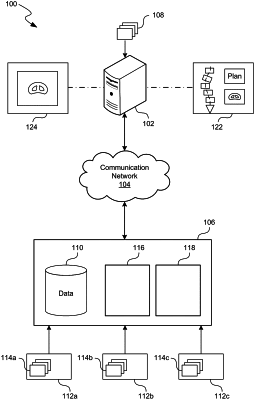| CPC G16H 20/40 (2018.01) [G06N 20/10 (2019.01); G16H 10/60 (2018.01); G16H 50/20 (2018.01); G16H 50/70 (2018.01); B33Y 80/00 (2014.12)] | 23 Claims |

|
1. A computer-implemented method for designing a patient-specific implant, the method comprising:
receiving a patient data set of a patient, the patient data set including data indicative of the patient's spinal pathology;
using at least one trained machine-learning model to:
identify one or more model patient data sets by comparing the patient data set to a plurality of reference patient data sets, wherein each identified model patient data set includes a scored treatment outcome for a reference patient that received surgical treatment with a respective implant to address a spinal pathology generally similar to the patient's spinal pathology,
generate at least one virtual three-dimensional anatomical model representing anatomy of the patient,
modify the at least one virtual three-dimensional anatomical model to represent a corrected spinal pathology for the patient based at least in part on the identified one or more model patient data sets,
design, using the at least one modified virtual three-dimensional anatomical model, a patient-specific implant configured to be implanted in the patient to achieve the corrected spinal pathology;
generating fabrication data for at least a portion of the patient-specific implant according to the design; and
transmitting the fabrication data to cause a manufacturing system to manufacture the portion of the patient-specific implant.
|